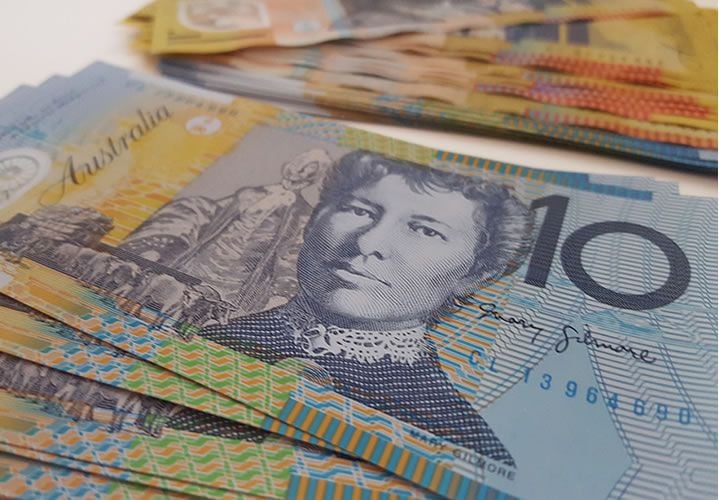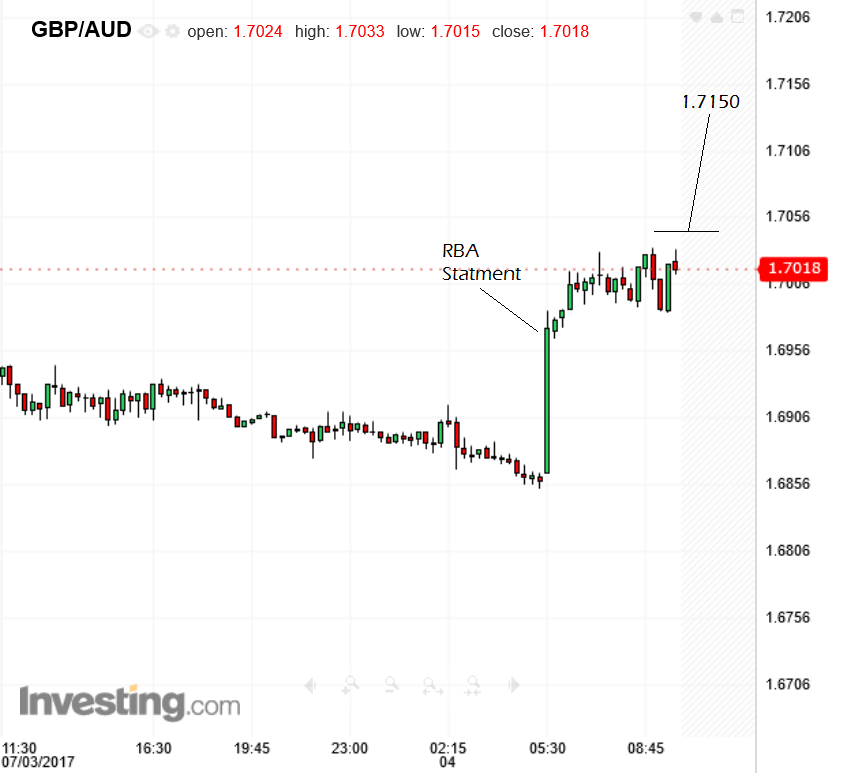Pound to Deliver More Gains v Australian Dollar Over Coming Week Following RBA Signals

The Pound to Australian Dollar exchange rate (GBP/AUD) spiked higher on Tuesday after the release of release of the Reserve Bank of Australia (RBA) July policy meeting statement.
The RBA disappointed markets by keeping interest rates unchanged at 1.5% and adopting a broadly neutral tone in the accompanying literature.
Markets had been expecting a more hawkish statement – hawkish means in favour of higher interest rates – in line with the more hawkish trend in central bank rhetoric since the recent conference in Sintra, Portugal.
On a relative basis therefore, the RBA simply has not provided the ammunition to propel demand for Aussie Dollars.
The comparative shift to a more hawkish stance by the Bank of England (BOE) in recent weeks and the neutral stance of the RBA led to the Pound gaining against the Aussie in the aftermath of the meeting.
GBP/AUD rose over 0.66% from a pre-meeting level of 1.6859 to a post meeting high of 1.7034.

"The RBA is emerging as the non-hiker in a kettle of G10 hawks, leaving AUD vulnerable to a mix of both internal and external drivers; we like GBP/AUD higher near-term and look for a bigger downward correction in AUD over the coming weeks," says Mark McCormick, North American Head of FX Strategy at TD Securities in Toronto.
The fall in value of the Aussie Dollar is in line with forecasts from analysts at Normura and Morgan Stanley who see the majority of central banks growing more hawkish with the notable exception of the RBA and Reserve Bank of New Zealand.
These would be left behind with a corresponding weakening in the AUD and NZD exchange rate compared to the other's, since rising interest rates atract more capital inflows.
“Overall, the RBA stayed broadly 'neutral' as we expected. They see an improving global backdrop supporting better domestic growth and higher inflation,” commented George Tharenou at UBS. "Despite a miss for Q1 GDP at a post-GFC low of 1.7% y/y, the RBA still expect a pick-up ahead."
In relation to forward guidance on policy, Tharenou said:
“Overall, we continue to expect the RBA to stay on hold ahead, and assess the impact of recent macroprudential policy tightening. The key signs to watch ahead are Q2 CPI and any GDP downgrade in their August SOMP (statement).”
Macroprudent policies are those which the bank intriduced at the end of 2016 to tighten lending and reduce the housing bubble.
Despite coming as a surprise to markets, several analysts had already highlighted the possibility the RBA might go ‘against the grain’ of the generally hawkish tide, at their policy meeting.
If anything, the recent shift in stance at global central banks will be welcomed by the RBA.
Prior to the meeting, for example, BK Asset Management’s Kathy Lien had said she thought the RBA would not adopt a more hawkish tone as that would strengthen the Australian Dollar, which would make exports less competitive.
“Going into this month’s meeting, we’ve seen further improvements in the labour market, a rally in iron ore prices and stronger Chinese import demand but businesses are nervous, home loans are falling and the trade surplus shrank significantly in April. So the central bank has no reason to change its views and if anything, it could express greater concern about the rising currency,” said Lien.
Concerning the outlook, we would expect the weakness in the Aussie Dollar to run a little further.
The move higher almost surpassed the key 1.7046 highs, which according to our technical studies, would probably confirm a continuation higher to 1.7150.
Save
